#geiger comparison construct
Explore tagged Tumblr posts
Text
GEIGER COMPARISON CONSTRUCT
#geiger#comparison#construct#comparison construct#geiger construct#geiger comparison#geiger comparison construct#comparison matrix#matix
23 notes
·
View notes
Text
The Venera program: Interplanetary probes from behind the Iron Curtain
The Pioneer and Voyager probes the United States sent to explore the outer planets in the 1970s are often, and accurately, lauded as historic interplanetary achievements. That’s partly because, equipped with the Pioneer Plaque and the Voyager Golden Record, these objects are ostensibly meant to be found by aliens someday, helping them easily burrow into public consciousness. Similarly, robotic explorers to Mars, including the Viking landers and the Sojourner, Spirit, Opportunity, and Curiosity rovers, take innumerable headlines, and they’re often even given anthropomorphized personalities.
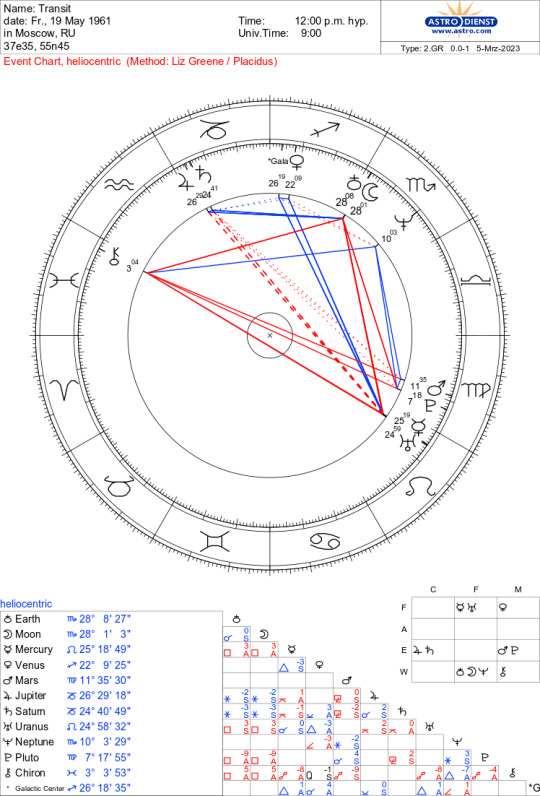
Almost forgotten, however, are the ambitious Soviet exploration missions of Venus. Beginning at the dawn of the Space Age in the late 1950s, the Soviets worked to design and construct a series of Venus probes. And for almost 30 years, they built and flew the interplanetary spacecraft as part of the Venera program — carrying out rather impressive feats, even by today’s standards.
In the early 1960s, the Cold War was in full swing and the Space Race was on. The Soviets were eager to notch as many “firsts” as they could in all realms of spaceflight. At that time, they had a better heavy-lifting capability than the United States. This allowed them to build and launch larger spacecraft, both manned and unmanned. And by using four-stage rockets and an advanced telemetry system, the Soviets could also mount missions to the difficult-to-reach inner planets.
Venera 1, the first probe in the series of Soviet Venus missions, weighed in at an impressive 1,400 pounds (at just 184 pounds, the first satellite, Sputnik 1, was a mere featherweight in comparison). Somewhat resembling a Dalek from Doctor Who, the Venera 1 probe was spin stabilized and packed with instruments, including a magnetometer, Geiger counters, and micrometeorite detectors. And like many of its successors, the interior of the probe was pressurized to just over one atmosphere with nitrogen gas to help the instruments function at a stable temperature.
However, the first Venera 1 probe never made it out of Earth orbit. And the second attempt, launched February 12, 1961, failed en route to Venus, though it did pass within about 62,000 miles (100,000 kilometers) of the planet.
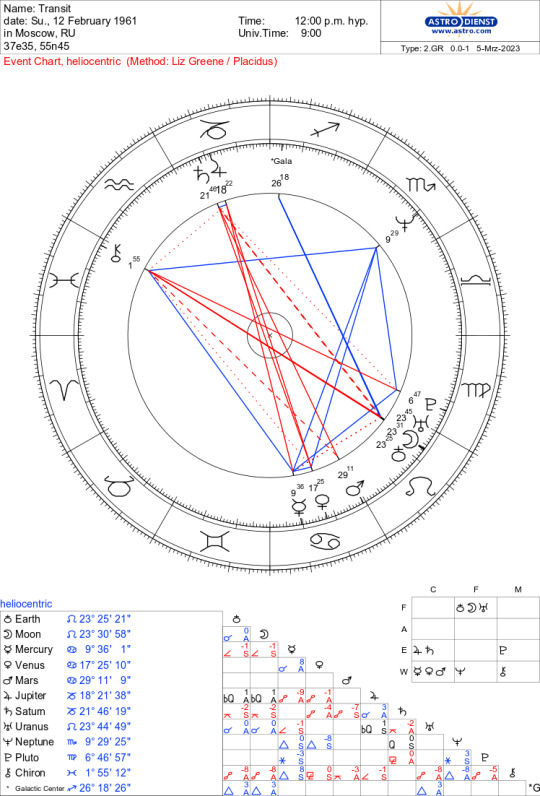
Venera 2, which greatly resembled Venera 1, was built to fly past Venus, during which it would record information and transmit it back to Earth. And the probe did complete its flyby on February 27, 1966, coming within about 15,000 miles (24,000 km), but it also overheated and was never heard from again. It’s still unclear whether Venera 2 failed before or after it zipped by the distant world.
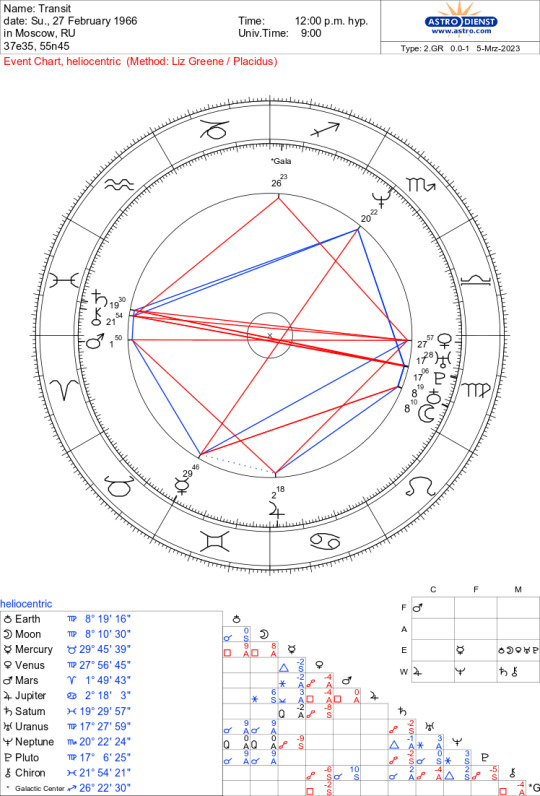
The Soviets designed the next four probes, Venera 3 through 6, to more closely study the atmosphere of our hellish neighbor. Generally weighing about 2,000 pounds (900 kilograms) each, these probes contained a suite of instruments and a detachable pod (known as a descent module) equipped with a second collection of devices that included a barometer, a radar altimeter, gas analyzers, and thermometers. Not all of these probes ended in success, though.
Venera 3 planned to land on the venusian surface, but it instead slammed into it on March 1, 1966 — officially making it the first spacecraft to crash into another planet.

Venera 4, however, spent more than 90 minutes taking measurements as it slowly floated down through the dense atmosphere of Venus on October 18, 1967. It also detected very elevated levels of carbon dioxide in the air, as well as a lack of a global magnetic field. And as expected, it eventually succumbed to the planet’s intense heat and pressure.
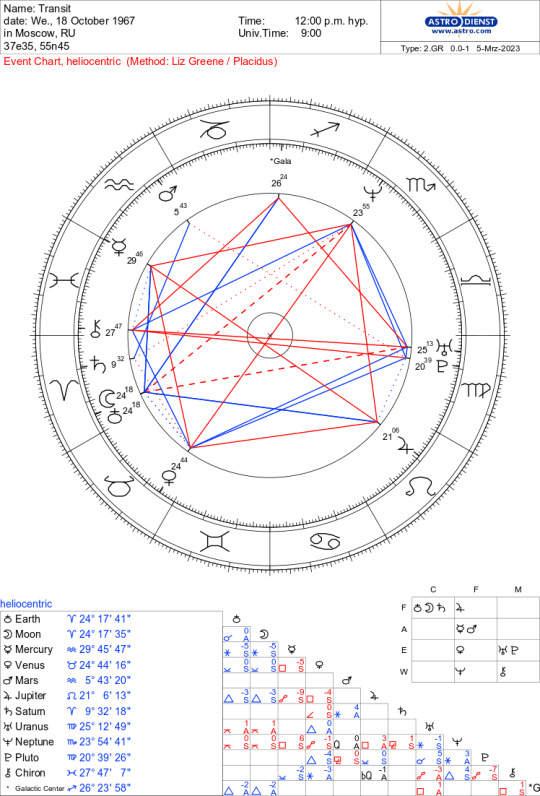
Both Venera 5 and Venera 6 were likewise successes, transmitting back data for more than 50 minutes as they parachuted through the atmosphere of Venus on May 16 and May 17, 1969. By helping scientists further characterize the atmospheric composition of world, these probes made it clear that Venus is highly unlikely to host life; romantic hopes of Venus as an earthly paradise were dashed.
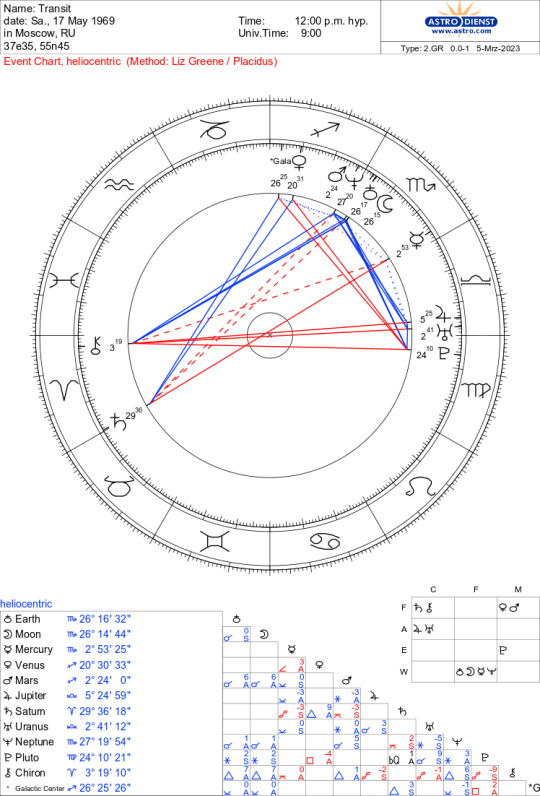
Venera 7 included an even more ambitious descent module designed to make a soft landing on Venus, which included heavy fortifications so it could briefly survive the inhospitable conditions on the surface. Launched August 17, 1970, the flight was a success of sorts. The lander made it to the surface on December 15, 1970, but it got there after its parachute ripped, causing it to fall faster than planned for nearly 30 minutes before smacking into the surface at about 38 miles per hour (61 km/h).

Initially thought to have failed, Venera 7 did manage to transmit meaningful data for a short period of time. For example, the lander measured a surface temperature of almost 900 degrees Fahrenheit (475 Celsius), or about as hot as a brick pizza oven. Although the probe’s pressure sensor failed during descent, researchers were able to use its measurements to estimate a surface pressure of about 92 bars, which is about what you would experience if you were more than a half mile (900 meters) underwater.
Venera 8 repeated much of the Venera 7 mission, albeit without its lander falling over when it reached the surface of Venus on July 22, 1972. Venera 8’s functioning pressure sensor confirmed Venus’ oppressive atmosphere, but it also took measurements of ambient light levels on the surface, confirming that future cameras should be able to capture the venusian sights.
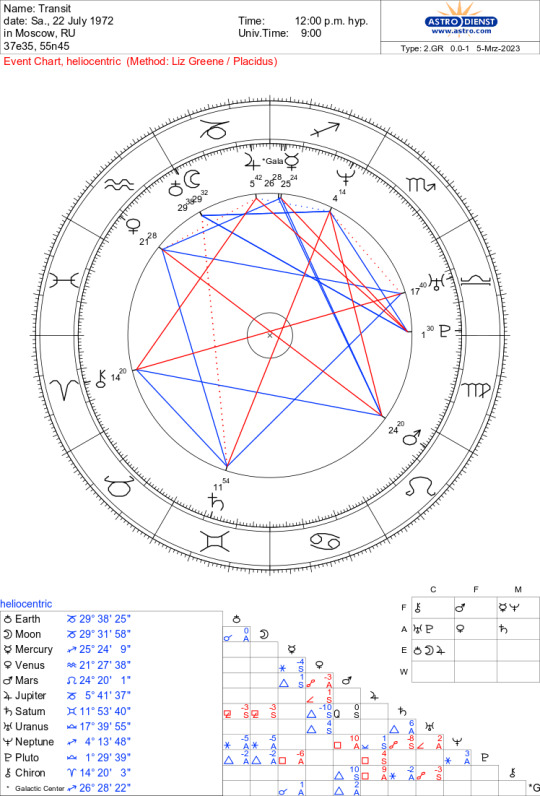
Of all the Soviet missions to Venus, Venera 9 through Venera 12, weighing roughly 11,000 pounds (5,000 kg) each, are the best remembered to this day. That’s mainly because their landers carried cameras that could directly image the surface.
Venturing to Venus between 1975 and 1978, several of the cameras on these probes failed, usually due to their lens caps not coming off. But nonetheless, a few managed to take and transmit the very first images from the surface of our solar system’s second planet.
The early snapshots obtained by Venera 9 and Venera 10 are haunting. Crisp, clear, and spherically distorted by their wide-angle lenses, they depict a harsh and rocky alien landscape extending out to the horizon. But the images also managed to capture the edges of the landers themselves, which reveals their distinctly Soviet design.
Venera 13 and Venera 14, both launched in 1981, were more advanced versions of the Venera 9 through 12 probes, carrying landers equipped with sophisticated acoustic devices that could tune in to the Venusian wind to gauge its speed.
Venera 15 and Venera 16, each weighing just under 9,000 pounds (4,100 kg), did not carry landers. In their place they brought highly advanced radar-based imaging systems that could map the blistering world from elliptical orbits. The Pioneer 12 probe may have been first to map Venus using radar, but Venera 15 and 16 did it better, reaching a resolution of about a mile (1 to 2 km) per pixel. The images returned by these probes were fantastically detailed, revealing broad swaths of the harsh landscape, complete with impact craters, dramatic rises, and lava-flooded basins.
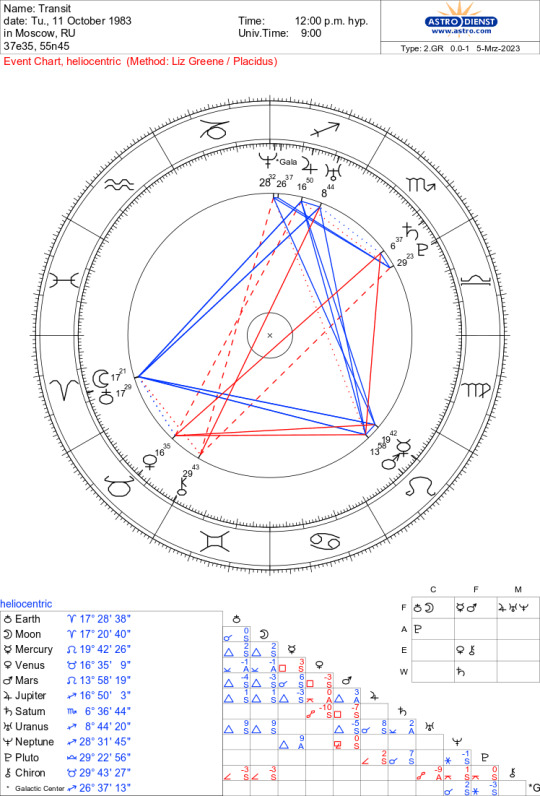
The U.S. made its mark on the exploration of Venus through missions like Pioneer 12 and the wildly successful Magellan, and other craft sent by the European and Japanese Space Agencies also contributed to our understanding of our planetary neighbor next door. Still, the Soviet Venera program remains the most intense and sustained series of missions to Venus yet.
And at least for now, that doesn’t look like it’s going to change soon.
0 notes
Text
before they leave, virgil reveals he has plans for their relay. a pipe dream, he called it, to get back into the institute. get the serum himself. but now that they’ve come - it’s the most excited, most hopeful, he’s been their entire time here.
by contrast, deacon isn’t happy to learn the plans are on the terminal. with no spare holotapes to download the plans on, she has to interface with the terminal herself. which means she has to step out of the power armor and bathe in radiation until a rad-x pill kicks in.
and it does, but not before she feels the growing headache, the ache in her gums. the plans download to her pip boy quickly in comparison.
‘think we should relocate out here?’ deacon says suddenly. ‘even the institute doesn’t want to come out here. worth it in exchange for the radiation, if you ask me.’
whisper looks over her shoulder to see him fiddling with some scrap on a table. keeping his hands busy, maybe. while one hand pokes at an old typewriter, the other is balled into a fist. his fingers flex, then clench, then flex.
‘i can have sturges draw up a floor plan for your new house when we get back, how about that? we’ll start construction when we bring back virgil’s serum.’
he walks up beside her, puts an arm around her shoulders. ‘this is why you’re my favorite.’ his voice sounds even more distorted through his suit up close, unfiltered through the power armor’s speakers. ‘always giving me something to look forward to.’
before she has time to register and unpack that statement, virgil’s terminal pings. file transfer complete. she has him check for any missing pieces, any file corruption, just in case. it’s all there. every little piece that’ll bring her to shaun.
except one.
‘someone will have to decode the courser chip before it will take you anywhere,’ virgil explains. ‘that’s the only missing piece.’
‘we know a guy,’ deacon says, ushering her back into the power armor. honestly. a girl collapses from radiation poisoning once and now it’s an issue. ‘anything else we need to know?’
virgil ignores him and looks up at her once she’s fully settled within the armor. he considers her, frowning. ‘you look.. familiar,’ he says slowly.
‘i’ve heard that before.’ from the synth she met with danse. he looked at her and said he could trust her.
he hums. ‘how old is your son?’
at that, whisper pauses. she - doesn’t know. the boy in kellogg’s memories has her confused. is shaun still a baby? or is he that ten year old she saw with kellogg? how long after the murder and kidnapping did she really wake up? whisper clears her throat. ‘an infant,’ she answers. ‘why?’
a heavy sigh is her answer before he shakes his head. ‘it’s nothing. the virus,’ he says, eventually, ‘has its side effects. sometimes i think i’m losing parts of myself.’ he knows something, or thinks he knows something. or maybe the combination of the virus and isolation have gotten to him.
whisper lifts her left arm slightly. ‘it’ll take some time to complete all of this, but i promise, i’ll be back with your serum.’
virgil nods. ‘thank you.’
-
deacon is almost comical in his ushering her out of the cave. ‘i thought you wanted to put down roots here?’
he grunts, slapping his hand against the back of the armor to get her to move faster. ‘right. casa del deacon. that’s after we get back, though. for now, we should go.’
‘alright, alright. i can’t wait to get out of this tin can, anyway.’ she breaks into a jog; the power armor’s strength carries her bounding steps further than deacon’s expecting. he yells hey! as she speeds back toward the edge of the glowing sea.
the return trip is quicker than the initial journey. they opt to keep walking through the night, dodging around packs of ferals and more wandering deathclaws until they’re finally out of the sea. she and deacon remove their respective helmets once her geiger counter finally stops ticking halfway down the road. blood drips onto one of the gauntlets, pooled at the bottom of her helmet collar.
at the edge of a small farmstead, nestled in a grove of dead trees, they treat her bloody nose and rising rads. a man interrupts deacon hooking up her radaway bag, gun raised, he shifts it between the two of them. ‘what do brotherhood bastards want now?’
whisper brings a blood-soaked cloth away from her nose. ‘not brotherhood,’ she explains, nasally. she illuminates her power armor with her pip boy, the area awash in green. ‘have they been through here much?’
the man lowers his gun slightly. ‘asked for supplies. a place to stay. kicked my own kids out of their beds so they could sleep here. if you aren’t brotherhood, what do you want?’
‘my partner here’s got two left feet,’ deacon explains. ‘tripped and fell on her nose. we just need to rest a moment. outside your house. totally out of your way.’
whisper snorts, more blood spurting from her nose. she spits red onto the ground. ‘we’ll move on soon, and we won’t be a burden on you or your children.’
the man grunts. ‘you’re minutemen, right?’ at whisper’s nod, ‘come on. at least i can keep a better eye on you inside, if you’re lying.’
deacon stuffs the ivs and needles back in his bag, and whisper removes the fusion core from the power armor and tucks it in her own. she removes a pouch of caps and hands it over to the man. ‘i don’t know if this will make it up to you, but - ‘
he takes it. ‘didn’t know if you minutemen would know how to find us out here. no caravans. my kids only hear the stories on the radio. my little girl’s a big fan of the general.’
deacon elbows her lightly, then tips her head back again and leads her toward the house. ‘i’ll make sure a patrol makes it down here. supplies, food, anything we can provide.’
‘you’re the general?’ he asks with disbelief. then he laughs, his demeanor changing completely. ‘oh, my little girl’s gonna love this.’
-
between whisper’s recovery and deacon’s stories to the kids, they end up staying the night. the father ushers the bother and sister back to their rooms once the sun begins to set. the exhausted pair are left alone with a pile of extra clothes on the floor as bedding and frayed blankets draped over a lone couch. broken and open windows allow the cold night air to blow through the small house. whisper sits on the couch, curled in on herself with one of the blankets wrapped around her.
‘you’ve got a little fan,’ deacon murmurs at her feet, wrapped in his own blanket.
‘and you told her i killed the mirelurk queen by myself.’ she kicks him softly.
‘hey, i was knocked out. what do i know?’
she chuckles lightly, drapes her arms over his shoulders and rests her chin on his head. under the ever-present wig, deacon’s now sporting a rough, ginger stubble that scratches against her chin. whisper watches the kids in the other room, smiling, as they sprawl out in their sleep.
deacon runs a finger along her palm, and her fingers curl in response. ‘what’s on your mind, partner?’
‘these kids have to deal with a lot,’ she says, airily. ‘back - back where i’m from, it wasn’t this harsh. certainly not perfect, but nothing like this. but they’re still finding things to be excited about. they looked so happy listening to you.’
‘it’s you everyone’s enamored with, pal. that little girl definitely wants to be you when she grows up.’
‘she’ll have to find herself a mouthy partner, then. wouldn’t be the same without one.’
-
at some point in the middle of the night, whisper abandoned the couch entirely, and finds herself waking up curled next to deacon on the floor. she sits up, one of deacon’s arms sliding down to rest in her lap. the rest of the members of the house are already awake, despite the sun barely having risen. beside her, deacon stirs.
‘i’m getting too old for this, for sure.’ he stretches out like a cat. ‘the kids are up, too? man.’
whisper notes he isn’t surprised at all to see her next to him. ‘come on, old man. let’s go home.’
-
they haven’t talked at all about what virgil told them. maybe he’s waiting until they return to hq so they don’t have to repeat themselves when making their plans - and even have more opinions on what’s surely going to be a ridiculous plan. whisper remembers the dead bodies strewn about the switchboard. the names deacon could remember. methodically and easily cut down, only slowed but not stopped by hails of turret fire.
‘a courser,’ deacon says absently. always following her own train of thought.
‘a courser,’ she repeats.
he sucks in air between his teeth. ‘that’s not gonna be easy.’
she sighs. ‘you saw him. if there were another way, he’d know. for now, this is what i’m stuck with.’
‘i’ve seen you do some crazy things, whisper, but this?’ he pauses. ‘tom could probably cook something up with those blueprints. let’s have fighting a courser be the last resort, okay?’
he’s scared. deacon, who led her into a den of synths with just the two of them, who followed her into the glowing sea despite its inhabitants, is scared. ‘you don’t have to do this. i’ve seen power armor take a beating.’
‘what kind of partner would i be if i let you go after a courser alone? if that’s what you want to do, i’ll be there. let’s just explore our options, first.’
‘okay,’ is all she says in return. she can’t allow his nerves to get to her. not since this is for shaun. she’s so close now; whether deathclaw or courser, she can’t let anything stand in her way. but it will be comforting to have him by her side.
-
sturges greets them at the gates to the castle, and she’s all too eager to hand over the power armor to him. he notes the flecks of blood in the helmet and the dried stain on her jumpsuit, but she waves him off. ‘radiation. where’s preston?’
‘in the armory, working with a few others on building more guns. havin’ trouble keepin’ everyone armed, now.’ he grins. ‘but that’s tons more friends we’ve got, and much less more enemies, right?’
whisper is mostly just glad to get out of the armor. the reminder that she’s now built a militia, an army, doesn’t bring the same smile to her face. with the prydwen looming across the bay, she remembers the words from nate’s speech, the only part she didn’t have to help him write: war never changes.
‘how’s everything going here, then? i see the shops are coming back outside now.’
sturges ducks down into the hallway. ‘yep. we’ve had some caravans out of bunker hill set up inside those old buildings. a family or two are living further down the neighborhood and joined us. all’s goin’ pretty well.’
when they reach the armory, there’s already a group of minutemen standing in the small room. it smells of gunpowder and grease, and a stack of ammunition sits on the middle table along with a series of laser rifles and pipe guns scattered along the other tables. with the slight rumbling from the power armor, one of the minutemen drops a screw for his pipe gun and looks up at the incoming armor.
there’s a scramble of movement as the minutemen move out of the way while also trying to clean up their mess of weaponry. sturges makes it through to the power armor station toward the back. the armor powers down, and after he steps out of the armor, pulls down a series of hooks to hold the frame in place.
with the power armor out of the way, the others finally see her walking down the hallway. the minutemen stand at attention, black-stained hands across their brows. preston, however, moves away from the bench, his jacket slung over a chair in the corner. he approaches her, hands reaching for her but stops himself short.
with a sigh and a soft smile, he says, ‘i’m glad you made it back safe, general.’
whisper looks behind him to the minutemen standing at attention. ‘thank you, preston. i do have something to talk to you about. and you, sturges,’ she adds, noting that he’s already put on a pair of safety goggles and heavy gloves.
after telling the rest of the minutemen to return to what they were doing, whisper leads them down into the tunnels and to sarge’s terminal. deacon startles at the doorway. ‘uh, anyone else see that thing, or did i eat some bad rations on the road again?’
‘he’s deactivated, don’t worry.’
deacon looks him over. ‘he’s facing that terminal. did he deactivate himself?’ whisper takes a deep breath. ‘whisper.’
she shoves his shoulder, but he crosses his arms. ‘you can punish me later, okay? but first - ‘ whisper explains virgil as she loads up the plans onto the terminal. behind her, sturges whistles.
‘complicated, but given some time, i can do it. this part, though,’ he circles a finger around the schematic for a computer, ‘that’s gonna be the hard part.’
‘we know a guy,’ whisper and deacon say simultaneously.
at that, sturges nods. ‘alright. no problemo. give me a few months, and - ‘
whisper nearly chokes. ‘months?’
‘this is a pretty big contraption here, general. we gotta clear out an area, build the thing - and the amount of materials we have to collect. our numbers will help, but it’ll be a while.’
months. her stomach sinks, same as when she walked into kellogg’s empty house and found nothing. a hand suddenly lands on her shoulder, startling her. ‘a vacation. thank you, sturges,’ deacon says, voice pitched higher to match her own. in his voice, ‘we have to coordinate with our other friends, too. and i’m sure everyone will come out of the woodwork with their own problems they want you to solve. it’ll pass quickly, don’t worry.’
whisper takes a deep breath. right. months to finish, months to scratch everything else off her to-do list. she angles her head in his direction. ‘to our friends, then? should we bring them here, so they can work together?’
deacon grimaces. ‘that’s between des and tom. the amount of battery acid injections he’ll make us all take before he agrees..’ he trails off with a wince.
‘battery acid?’
‘carrington wasn’t happy when he introduced it.’ he shrugs. ‘less happy when i let him inject me with it. i might be able to convince him, but it’s up to des.’
preston and sturges look at each other, then to whisper. ‘it’s, um. a long story.’ she shrugs off deacon’s arm and inserts one of the holotapes on the desk. ‘just in case, i’m going to make a copy. that way tom can at least look at it.’ she does and puts the holotape in her bag.
‘alrighty then. you and your friends story everything out.’ he claps whisper on the shoulder, and she’s sure there’s going to be a bruise from all the reassurances today. ‘i’ll get started on this right away. don’t you worry.’
but she worries. back up the stairs, she worries. because it’s months. she barely notices preston still following behind her until he puts a hand on the small of her back. ‘i don’t... mean to add more to everything going on, general, but i thought you should know: mama murphy’s been asking about you. she wants to talk to you, back in sanctuary.’
mama murphy. ‘you don’t think she had a vision, do you?’
‘i hope not. she has to take jet to see anything. can you - can you check in on her, at least? i’m sure the longs would like you see you, as well.’
‘of course. i should see how codsworth and dogmeat are doing, too.’
‘right. uh,’ he removes his hand and takes a step back. ‘i guess i’ll coordinate a few groups to retrieve scrap metal for this project.’ he wipes his brow. ‘after a shower.’
‘i know a few places that might have some useful scraps. i can mark it on - ‘ she pauses, then, ‘did you say shower?’
‘yeah, sturges found some piping after we cleared out a collapsed wing. we put up some curtains and he set up a few showers.’
whisper blinks, then bolts toward the workshop once more. tom and mama murphy can wait. she’s going to take a shower.
#siri drabbles#series: we will all go together when we go#i'm really just writing so i can say i have a rough draft at this point#i'm so close to the institute and all the heartbreak it's gonna be fun
3 notes
·
View notes
Photo










Concrete. Standing in front of the complex for the first time is a hit in the face. In some places the walls are 30 meters high and from here it seems as if the building could take off the ground every moment. Even though it was finished late, the building is counted into the Brutalist Movement in Architecture during the 50s/60s/70s. Brutalist should not remind you of brutality, it derives from the german word Beton Brut, for concrete breed. Which means blunt and raw concrete where you can see the wood grain of the formwork and many traces of the construction process. It is hand crafted concrete. The tunnels and hallways are lit by big circular windows that people open and take a smoke or just daydream at. Looking outside into the yards you notice garbage here and there down in the grass. Some people throw waste outside their windows why seagulls and crows gather between coffee filters and search for food on the meadows. Everywhere on the inside, the floor is covered with bumped rubber tape, that keeps the steps from echoing thou the tunnels, avoiding an uncomfortable feeling of beeing trapped or being followed. Still the echo influences the behavior and makes you whisper intuitively when you speak. Out of a stairway a door phone is priodically buzzing and cracking. The comparison with a Geiger-Counter comes to mind when suddenly a loud squeak is heard inside the tunnel. A young guy on his motor bike is racing by. Rubber and gasoline. The original concept „Unité d’Habitation“ Le Corbusier’s, was to unificate society and architecture. The building complex feels like the total opposite of its idea today . When you look at it from afar it is isolated from the city and as you actually enter the building the feeling shifts and it is you yourself feeling apart from the rest of society.
#street photography#fine art photography#black and white#italy#brutalism#trieste#architecture#art photography#quadrilatero#huma condition#civilization#carlo celli#Le Corbusier#ATER#life photography#Oliver petrus
1 note
·
View note
Text
“Tremors” – welcome to perfection
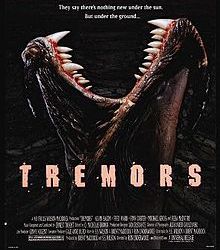
(originally published on Talkbacker.com on April 8, 2014)
You only need to catch a glimpse of the “Jaws”-parodying poster for “Tremors”, and you’ll know exactly what to expect. These filmmakers aren’t about to throw blood and guts or dark stuff at ya. This is strictly tongue-in-cheek; there ARE underground monsters, they eat people, there will be deaths, but there will also be hilarious dialogue, great characterizations, gorgeous desert vistas, and some high-quality filmmaking and practical effects-work here.
Someone should deserve a special award for casting Kevin Bacon and Fred Ward as the main protagonists in this film. As we are introduced to Valentine “Val” McKee (Bacon) and Earl Basset (Ward), the instant and natural chemistry between these two is palpable. It’s a match made in movie heaven. Val and Earl wake up in the desert, in true cowboy-style, one sleeping in the back of their pickup truck, the other sleeping under it. The cowboy analogy actually reminds me of another great pairing, Butch and Sundance. That’s probably the closest comparison of the character dynamics that’s going on between Val & Earl.
Val is the younger one, a dreamer, a womanizer (with a very special list of qualities he expects from a woman: “You will have long blonde hair, big green eyes, world class breasts, ass that won’t quit and legs that go all the way up.”) and the more restless soul. Earl is the older, wiser, laconic, practical man. But the unifying quality of both Val and Earl is, they are not the all-knowing, all-powerful movie heroes. They are actually both kinda…dummies. In a good way. In an entertaining way. I don’t know how much Bacon and Ward hung out or rehearsed before the shooting of this film, but they are clearly having a blast with their characters. Most of the stuff they do has a spontaneous, improvisational feel to it. I would certainly like to see them work together again sometime.
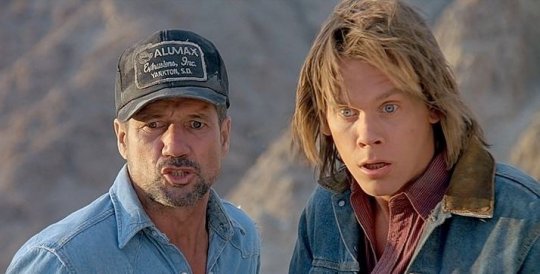
Earl Bassett: “Is this a job for an intelligent man?” Valentine McKee: “Well, show me one and I’ll ask him.”
Val and Earl are the for-hire “handymen” in the Town of Perfection (population 14), located in a vast Nevada valley surrounded by mountains from all directions. As the town’s survivalist nut Burt Gummer (more about HIM later) states: “that’s why we chose this place. Total isolation.” Besides Val and Earl, the township consists of: storeowner Walter Chang (the great Victor Wong), pottery maker Nancy (Charlotte Stewart) and her daughter Mindy (“Jurassic Park”‘s Ariana Richards), Melvin (Robert Jayne), Dr.Wallace and his wife (Conrad Bachmann and Carol Marcus – I mean, Bibi Besch), Miguel (Tony Genaro), Nestor (Richard Marcus), Old Fred (Michael Dan Wagner), Edgar Deems (Sunshine Parker) aaaand of course, the aforementioned Burt Gummer and his wife Heather (Michael Gross and Reba McEntire). Also in town is a graduate student of seismology, Rhonda LeBeck (Finn Carter), who is the EXACT opposite of everything in Val’s list, but it’s pretty obvious what’s going to happen there, isn’t it?

Earl Bassett: “We gotta run. We’ve got a schedule to keep.” Valentine McKee: “Yeah. See, we plan ahead, that way we don’t do anything right now. Earl explained it to me.”
But as the story begins, the number of characters begin to decrease. In fact, one of them is already gone at the point where the movie begins. As Val and Earl finally have had enough of this shit (literally, as emptying a septic tank blows in their faces), they come across Edgar Deems, sitting on top of an electrical tower. Edgar, who apparently was a town drunk, has actually died from dehydration. As the doctor diagnoses, he’s been sitting up on the tower, probably for days. Here’s the first sign, that something’s rotten in Perfection. Well, UNDER it, to be more precise.
Now, the director, Ron Underwood, does even more emulating from “Jaws” that just the poster. The underground creatures appear mostly off-camera for the longest time, much like the shark. The following attacks on people, Old Fred and the doctor and wife, are filmed very efficiently, adding mystery to the monsters while also showing their viciousness and extreme strength, as the doctors wife is sucked inside the ground while hiding inside a Ford station wagon! These creatures mean business. Also, two road-construction workers who are working on the only road in and out of town, get quickly dispatched and the resulting rock slide cuts Perfection completely off from the outside world. The scene includes a brilliant physical jackhammer gag, that’s like something right out from a Warner Brothers cartoon. And in this latest viewing I noticed, that there are a LOT of cartoon gags in the film.
Underwood is clearly using a Tex Avery-playbook in the way he shoots action, and it adds an extra level of fun to the overall tone of the film. Especially the demises (spoiler there) of each of the creatures are a carefully balanced mix of cartoon and grossness. From a creature coming in contact with concrete at full speed with a big “boink”-sound effect into the last one taking a Wile E. Coyote-swan dive off a cliff. And in the end of the second act, a creature entering “the wrong goddamn rec room” – Gummers’ basement – and getting drilled with more bullets than in your average John Woo film.
The Gummers. Ahh yes, the Gummers. Let’s talk about them for a bit.
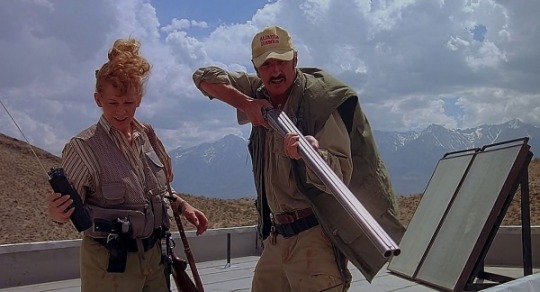
Earl Bassett: What kind of fuse is that? Burt Gummer: Cannon fuse Earl Bassett: What the hell do you use it for? Burt Gummer: My cannon!
Until “Tremors”, Michael Gross was basically known as the liberal, ex-hippie father Steven Keaton in “Family Ties”. One day after filming the last episode of that show, Gross began filming “Tremors”. Now talk about switching gears; Burt Gummer is a polar opposite of Steven Keaton. He’s a paranoid survivalist, definitely right wing, a gun nut with a capital “N”. The Gummer home is basically a bunker, set up for end-of-the-world conditions. Or as Burt states after the monster attack: “Food for five years, a thousand gallons of gas, air filtration, water filtration, Geiger counter. Bomb shelter…” That tells all about good old Burt’s world views. As does the license plate of his car: UZI 4U.
His wife Heather is played by country singer Reba McEntire in her first film performance. She does a damn good job too. Heather is likable, but also just as tough-as-nails as Burt and can certainly handle guns as well.
The creatures – Graboids, as they have been known since, in sequels and TV-series alike – are designed by Tom Woodruff and Alec Gillis’ company Amalgamated Dynamics and they are some of the best and most realistic creature work that’s been ever put on screen. Basically pre-historic worms – although the characters are trying to make up all kinds of explanations for them, from being aliens to government-built monsters to be used against invading forces. AD has worked on the “Alien”-franchise since “Aliens”, and one can see that the “double-mouth”(biting tentacle tongues shooting out from a larger mouth) has evolved from the star-beast’s similar one. These creatures are strong, fast (moving like armored freight trains underground) and smart. That is always a welcome thing in monster films. Graboids are constantly adapting, and the means that the heroes use to avoid them, don’t necessarily work for a second time. Of course they have a weakness, this time it being loud noises, as they basically sense everything by vibrations. Smart, almost “National Geographic”-approach. Nothing hokey or supernatural. Just the way I like it.
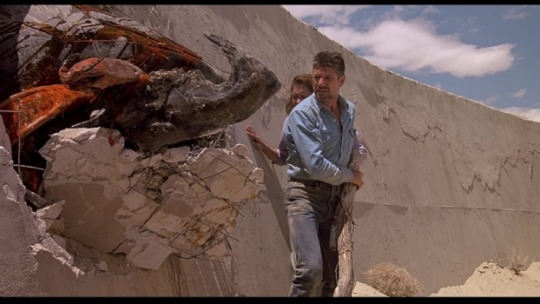
Earl Bassett: “Hey Rhonda – you ever seen anything like this before?” Valentine McKee: “Oh sure, Earl. Everyone knows about them – we just didn’t tell you.”
Pretty soon the remaining residents of the town are forced into exile, trying to escape into the mountains while pursued by the hungry beasts, the final confrontation happening on the edge of a tall canyon. “Tremors” was shot – with the exception of two sets – on location. Outside in Lone Pine, California. And you can basically SMELL the desert, and the heat, in every frame of the movie. The setting, as well as the look of the town, evokes memories of the great westerns. In fact – the third sequel for the movie IS a western, going back in time to the golden years of Perfection.
Too bad the sequels are of diminishing quality, adding unnecessary sci-fi elements (such as FLYING Graboids, WTF?) and poorer quality effects. The unifying element in the sequels (as well as the quickly cancelled after 13 episodes TV-show) is Michael Gross’ Burt. But to be absolutely frank, Burt Gummer is not a leading man. He works best in small doses. The driving force in this film is the tag team of Val & Earl, arguing, bickering, rock-paper-scissoring through near-death scenarios and finally coming up as winners (spoiler).
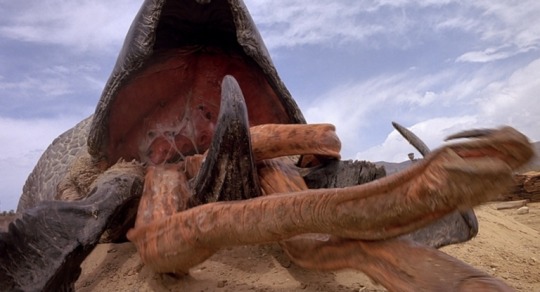
I’m sensing a pattern in my reviews (besides all so far being from 1990); “Tremors” was only a modest hit at the box office, but it went on to become a huge hit on home video and subsequent media. But as I go through my lists of great films, such seems to be the case with almost all of them. “Tremors” is funny, well-paced, beautifully shot thrill ride, with wonderful characters and rich, quotable dialogue. If that is not the sign of a cult classic, I don’t know what is. Ron Underwood proceeded to direct films like “City Slickers” (keeping up with the western tone from this film), “Heart and Souls”, “Speechless” and finally “Pluto Nash”, which basically killed his mainstream career, reducing him into mostly a TV-director.
Too bad – perhaps another low budget monster movie is what he should try again…?
3 notes
·
View notes
Text
Notes on the teratology of disaster response
September, 2017
It is difficult to speak of disaster without relinquishing specificity, as if the very term insists on generalization. One reason that the massive body of literature on 3.11 — the 2011 earthquake, tsunami and ensuing nuclear catastrophe at Fukushima-1 — has not aged well is that it itself has become the vessel of grander narratives: narratives of risk and its incalculability, technological failure and its inevitability, of victimhood as universal, and of safety as myth. This report on a September 2017 study trip to Fukushima’s Iitate village, hosted by the NPO Resurrection of Fukushima and sponsored by the Atsumi International Scholarship Foundation, argues that for those that work in and on the aftermath of this disaster — whether they are government agencies, volunteers, scientists or individual citizens — negotiating these mythological or ideological inflections is a central challenge.
Over 6,000 people lived here when disaster struck: well outside the exclusion zone, the village even welcomed a large number of disaster refugees from other areas. But a few days later, changing weather patterns pushed the F1 radiation plume inland. On March 22, an inspection team from the International Atomic Energy Agency gathered samples twice that of the civilian safety limit inside the village. Anxiety and animosity grew amidst contradictory radiation readings, and conflicting information on its risks; many left on their own accord. “We have been sacrificed so that Tokyo can enjoy bright lights,” a local farmer told the New York Times. A month later, the evacuation order came. NHK showed footage of faceless workers in hazmat suits running geiger counters over childrens’ bodies, “as if radiation was contagious”. For Muneo Kanno, Resurrection of Fukushima’s local representative, this is the moment when Iitate’s collective disaster experience transformed from victimhood into pariah. When journalists reporting on a hot spot in Tokyo’s affluent Setagaya ward called it “another Iitate,” the village had been reduced to a marker of pollution. “We found ourselves right in the middle of a narrative we could not have changed or predicted.“ This time last year, nobody was allowed back, but now some six percent of villagers have returned. For those that do, it must be said, the serious problem to contend with is not radiation but sanitation. Meter-high soil platforms are caked on top of existing lots to prevent flooding from contaminated rivers. Decontamination demands the removal of top soil, traditionally considered the most fertile, which often ends up in black bags on top of the same field or a nearby one, sand and gravel put in its place and flattened by heavy truck wheels.
Surveying the landscape, the black bags are what one tends to notice first. There are a lot of them: 2,6 million in Iitate alone, by last year’s count. At one metric ton it takes a lot of work to fill one, and a truck only takes three or four. The enterprise of shuffling them about the village is a labor-intensive one, but their presence can be lucrative. When our dour bus guide addresses them some twenty minutes into the tour, one has almost had time to get used to them. Sometimes wrapped in a glaucous green tarpaulin, sometimes behind construction site fencing, they accentuate the contours of the post-disaster landscape as reminders of the fallout that lingers here, the impossibility of accounting for it all, and that place beyond the mountains whence it came: F1 with its molten cores, at once nowhere and everywhere to be found, its glacier walls, and its expanding network of contaminated water tanks… F1 and the incomprehensibly large apparatus of decommission and decontamination surrounding it: the endless lines of trucks entering leaving the compound, the hazmat-suited hordes of subcontractors attending to it, the shanty towns that house them, the convenience stores, movie theaters and red-light districts that keep them going. Just because a few reactors explode, it does not mean they stop being productive.
Iitate straddles the inner edge of Hama-dori, the coastal and most developed part of Fukushima prefecture. Yet it is far both from the booming economy of decommission, and from the avant-garde landscape architecture transmogrifying coastal communities leveled by the tsunami into wave-breaking fortresses. It is far from all of that. But there is no lack of activity here: large public works projects are everywhere, as are the traces of state-cognitive infrastructure, from the ubiquitous Geiger counters to the traffic checkpoints. The machinery of disaster management creeps outward while the no-go zones recede: newly redrawn lines between those to be repatriated and those to remain in refuge cut deep in the social fabric of the village diaspora, already stretched thin. As we descend into the next valley, we are welcomed by a dense latticework of solar panels covering large swathes of its basin. Solar has often been touted as a potential antidote to the centralized yet lossy distribution schemes exemplified by nuclear power, but these massive facilities are owned by infotech conglomerates with headquarters in Marunouchi skyscrapers, and nobody seems to know where the electricity is going. The megasolars flooding these rice fields on aggressive short-term leases, are themselves high-risk, high-return endeavors that seem to replicate the central contradictions of the nearby nuclear facilities. I reach for my phone to read up on the leasing process, triggering a brief bidding war won by an advert for “self-powered” cryptocurrency farms to be rented out, in turn, to larger mining initatives. Worlds collide: it is a photo of a solar farm identical to the one we are driving past.
Amidst this landscape of simultaneous intensity of investment and decay, the NPO Resurrection of Fukushima has crafted a powerful vision of local community and regional autonomy, and in that same context, a unique position for themselves as a conduit between outside experts, villagers and local government. Active in Iitate since the early disaster aftermath, they have developed and documented a range of experimental practices responding to the reality of devastated conditions for agricultural production through both fallout and cleanup, in addition to systematic radiation monitoring across the village. The latter seems to be organization’s primary concern during our visit, and at the core of their activities lies a map of the village split across a grid into zones for automated collection of up-to-date radiation values, a record of which can be accessed for comparison. In creating a map that is in many ways more palpable than the simultaneously derelict and investment-heavy territory it represents, Resurrection of Fukushima’s monitoring efforts interrogate the relationship between actuality and virtuality, real and representation. Differently put, what the earth gives matters less than its radiological readings. What is harvested here is but a byproduct (albeit a delicious one). For Resurrection of Fukushima’s president, Yoichi Tao, this task of making the invisible visible is also a therapeutic, because accumulation of data alleviates the anxiety of uncertainty that otherwise threatens to become all-pervasive among those trying to survive in the village. What’s at stake here is less the accuracy or credibility of individual measurement, but the threshold where data accrues sufficiently so as to afford it some weight amidst the post-disaster complexity of multiple monitoring initiatives, expert opinions and governing agencies. Yet even if people trust the numbers, “they don’t trust us”, says Mr Tao. “They think we’re some weird scientists.” In response, he argues that “we are not here for anyone else’s sake, but our own.” The metropole is a deadening place, and there are a lot of interesting things happening out here. Resurrection of Fukushima is not here to act in the name of the village or its denizens: “we empathize (kyoukan) and collaborate (kyoudou)” but it is up to the villagers themselves to wrestle back control over the post-disaster narrative. The rhetoric here is refined. Yet the concrete characteristics of this collaborative relationship remain enigmatic throughout our residency. We spend our last morning preparing seedbeds for one such experimental harvest: a few dollar store bags of radish seeds.
Concrete initiatives like this one organized by Resurrection of Fukushima seem marked by serendipity and loosely assigned responsibility, something us city-dwellers fail to facilitate. Instead we fall back onto our own hierarchies, clueless as to what larger questions shaped the experiment’s design, and how it fits into the long-term program of data accumulation. Before leaving the village, we return the dosimeters we’ve worn during our visit and each fill out a radiation exposure diary of sorts; in itself a stimulating and productive group exercise, but while their presence demanded one’s attention during the first day or two, I get the feeling that most of us have already stopped worrying about the implications of the dosimeters around or necks or their wildly uneven readings. Seventy-two hours in the stunningly beautiful surroundings of Iitate village is enough time to trouble anybody’s alarmism regarding such matters, but nowhere near enough to grasp the magnitude of the project that the organization have embarked on, nor of the post-disaster as it takes shape in their steadfast plotting of radioactive half-lives toward the vanishing point of regional resurrection and autonomy.
3 notes
·
View notes
Text
Particularly, Owning A Gilbert No
Gone are the days when people were completely oblivious of the dangerous effects of radiation exposure when it was something thrilling. To them, radiation had the facility to make things glow and will even improve one’s health. We’ve realized the onerous method that not everything that glitters is gold and that radiation publicity and nuclear energy pose a menace to people’s health. Nevertheless, few would agree with this claim back in the 1950s when nuclear optimism started flourishing across the globe and penetrated every sphere of people’s lives. Advances in the field of nuclear physics massively modified the way people lived. While some folks considered nuclear power as a terrifying risk, many others shared a terrific nuclear optimism, celebrating the truth that everything will likely be "nuclear" sooner or later. From low cost electricity to water for the thirsty and food for the hungry, nuclear optimism of the Atomic Age appeared to haven't any limits.
As it turned out, not every part about nuclear energy was constructive. The nuclear energy business grew quickly within the 1950s, inflicting numerous environmental problems and tensions in international relations and diplomacy. Large Atomic Bomb toy on the Children’s Museum of Indianapolis. Through the 1950s, there was a development in nuclear-impressed designs and ideas. Many companies envisioned things like nuclear-powered clocks, autos, dwelling appliances, and even some radioactive client merchandise resembling toothpaste, anchor2 lipstick, and cigars. Apparently, the toy industry had just a few ideas of its personal. 1940s Gilbert chemistry set. Photographed at Shoreline Historical Museum, Shoreline, Washington. Exposing children to radiation seemed not only harmless but even desirable. Plenty of the toys made within the 1950s have been named "atomic" simply to sound cool, but a number of the manufacturers went further and included radioactive components of their products. One such product was the Gilbert No. U-238 Atomic Power Lab. Released for the first time in 1951, this nuclear physics academic set is finest remembered for being arguably essentially the most harmful children’s toy ever produced. Mister Atomic, again side.
Amongst other issues, the set included a Geiger counter, electroscope, spinthariscope, a Wilson Cloud Chamber, instruction ebook, and, most importantly, radioisotopes. Taking part in with uranium ore back in the 1950s was not one thing that everybody could afford as it was fairly expensive. 500 in today’s money). 10,000 to anybody who discovers deposits of uranium ore. A extremely neat and "slightly" radioactive toy. Replica Atomic Robot Man. Mother and father who worry that a toy they purchase at the moment might contain toxic chemicals, brace yourselves. Such chemicals current in children’s toys are nothing in comparison with the radioactive 1947 Lone Ranger Atomic Bomb Ring, a Kix cereal promotion. Replica Atomic Robotic Man. "You’ll see good flashes of gentle in the inky darkness of the atom chamber. These frenzied vivid flashes are attributable to the released power of atoms." The producer also promised that the radioactive isotope inside the toy was harmless to children, however still, the concept of exposing your child to it offers one pause. Again in the time when uranium was thought-about to be the brand new gold and uranium prospectors had been all around the United States, Gardner Games created the "Uranium Rush" board recreation. This game allowed players to put themselves within the position of uranium prospectors and collect a lot of money from the deposits they uncover on the map. If you liked this article so you would like to collect more info regarding anchor2, Www.zentai-spandex.com, nicely visit our internet site. The game was battery operated and of an analogous design to electric quiz games from the mid 20-century. There was additionally a cardboard Geiger counter included in the equipment with which you possibly can discover uranium on the map. One other creepy toy of the Atomic Age was the Atomic Robot Man, one of the earliest toy robots ever manufactured. Originally produced in publish-struggle occupied Japan within the late 1940s, the Atomic Robotic Man nowadays has a really particular appeal to collectors, and originals are really exhausting to seek out.
Scientists blast radiation at groups seeds and plant cuttings to scramble their genetic code and produce random mutations. These seeds are then cultivated and inspected for the most fascinating mutations. It’s a roll of the dice, but it’s a course of that’s quick, easy and cheap. And in contrast to CRISPR or other methods, there’s no man-made genetic modification. Somewhat, the radiation put stresses on the plant forcing it to adapt with its personal genetic materials. It’s widely utilized in creating countries and has yielded more than 3,200 helpful mutants that seem in grocery shops the world over. In the present day we have now mutant wheat, rice, pears, peas, peppermint, grapefruit and extra. In Bangladesh, for instance, forms of rice produced by way of mutation breeding have increased crop yields threefold over the past few a long time, in accordance with the World Nuclear Affiliation. Radiation might additionally save the ubiquitous Cavendish banana. "There’s a banana blight, and part of the reason is we use a single selection.
0 notes